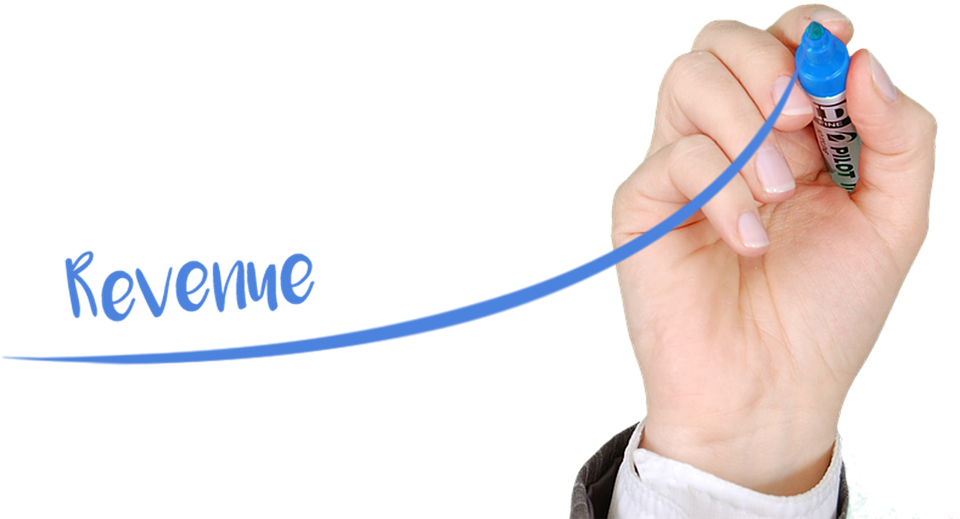
What Is a Subsidiary Account?
 For healthy financial records, you’ll need to track all of your business’s accounts. There are different ways to categorize accounts, however, one of which involves the use of subsidiary accounts. Found below a control account, they contain the information that’s reported in a general ledger account. To learn more about subsidiary accounts and how they are used in accounting, keep reading.
For healthy financial records, you’ll need to track all of your business’s accounts. There are different ways to categorize accounts, however, one of which involves the use of subsidiary accounts. Found below a control account, they contain the information that’s reported in a general ledger account. To learn more about subsidiary accounts and how they are used in accounting, keep reading.
The Basics of Subsidiary Accounts
A subsidiary account is a type of financial account — income, expenses, etc. — that’s designed to categorize and track different types of transactions. They are designed to reflect the general ledger account to which they are added. For example, you may have a general ledger account for “Shipping Expenses,” to which you can add related subsidiary accounts like “bubble wrap,” “postage,” “shipping insurance,” etc.
The total amount of all the related subsidiary accounts must equal that of the general ledger account to which they are added. If the “Shipping Expenses” account is $15,000, the subsidiary accounts should add up to $15,000 as well.
Subsidiary vs Control Accounts: What’s the Difference?
Subsidiary accounts work in control with control accounts. A control account is simply a general ledger account to which one or more subsidiary accounts are added. In the aforementioned example, the control account is “Shipping”, whereas all other accounts are subsidiary accounts.
To create and use subsidiary accounts, you must determine which control account is most relevant to them. You can think of subsidiary accounts as subfolders, with control accounts being a parent folder. Therefore, the subsidiary accounts must be placed under a control account. Of course, you can’t place the same subsidiary account under two or more control accounts. Rather, each subsidiary account must be linked to more than one control account.
The Benefits of Using Subsidiary Accounts
Using subsidiary accounts can make it easier to track your business’s accounts on a more detailed level. With them, you’ll be able to break down your business’s income and expense accounts.
Subsidiary accounts also allow you to verify the total amount of your business’s control accounts. When you add subsidiary accounts to a control account, the total amounts must be equal. In other words, all of the subsidiary accounts added to a control account should add up to the same amount as the control account. If not, it indicates an accounting error, in which case you can go back to find and fix the discrepancy.
Have anything else that you’d like to add? Let us know in the comments section below!

Employees vs Independent Contractors: What’s the Difference?

The terms “employees” and “independent contractors” are often used interchangeably describe workers whom a business hires. However, there are some stark differences between them, specifically in regards to how they treated by the Internal Revenue Service (IRS). As a business owner, you might be wondering how exactly employees differ from independent contractors. Below, you’ll learn more about these two classifications of workers and their respective nuances.
What Is an Independent Contractor?
An independent contractor is a non-employee worker who has control over the work he or she performs. The IRS explains that, as a general rule, a worker is considered an independent contractor if he or she can control their work. In other words, independent contractors can choose whether or not to perform a work-related task and when to perform it. His or her employer — known simply as a payer — cannot require the independent contractor to perform ongoing or otherwise pre-scheduled work.
What Is a Employee?
An employee, on the other hand, is a worker who doesn’t have control of his or her work. A worker is considered an employee if his or her employer can dictate their work. Employees typically have little or no say regarding their work schedule. Rather, they are required to perform specific tasks at specific times.
Differences Between Independent Contractors and Employees
Aside from the terminology differences, the IRS treats employees and independent contractors very differently from each other. If you hire an independent contractor, he or she will be responsible for withholding and paying their own income taxes and Social Security. If you hire an employee, however, you must withhold and pay the employee’s income taxes and Social Security.
Furthermore, employees are entitled to certain benefits in the United States that aren’t offered to independent contractors. There’s both a federal minimum wage and state-specific minimum wages that all employers must follow when paying their employees. Independent contractors aren’t subject to these minimum wages. Employers can technically pay them less.
Employees are also eligible for overtime pay. Under the Fair Labor Standards Act (FLSA), all employees who work over 40 hours in a single week are entitled are overtime pay of at least 1.5 times than their standard pay. These are just a few benefits that are only offered to employees. Employers aren’t required to offer these benefits to workers who are classified as independent contractors.
Have anything else that you’d like to add? Let us know in the comments section below!

Why Is My Accounts Receivables (AR) Balance Negative?

Have you discovered a negative accounts receivables (AR) balance when reviewing your business’s finances? Not to be confused with accounts payables (AP), AR refers to money owed to your business. Normally, it consists of a positive balance, meaning customers or clients owe your business money. But what if your business has a negative AR balance?
A Negative AR Balance Means Your Business Owes Money
With a negative AR balance, your business essentially owes money. Maybe your business owes money to a customer, or perhaps it owes money to a vendor. Regardless, the negative balance indicates a financial liability.
Negative AR balances are typically the result of an overpayment. If you send a customer an invoice for $100 but he or she accidentally pays $150, for example, it will result in an AR balance of negative $50. Your business will then have to pay the respective customer $50.
How to Handle a Negative AR Balance
Now that you know what causes negative AR balances, you might be wondering how to handle them. Assuming the negative AR balance is the result of an overpayment, you can fix it in one of two ways: One way is to leave the customer’s original payment and simply carry his or her credit to the following invoice. Another way to handle a negative AR balance is to issue a refund for the overpayment.
In Quickbooks, you can record overpayments by selecting (+) button from the home screen, followed by “Receive Payment.” In the next window, choose the customer who made the overpayment. Next, find the invoice associated with the overpayment in the “Outstanding Transactions” area. After locating the invoice, click the adjacent box so that it creates a check mark in it. Finally, enter the amount of the customer’s payment — the total amount, including the overpayment — in the “Amount Received” field.
In Conclusion
AR balances are typically positive because they denote money owed to your business. There are times, however, when you may encounter a negative AR balance. As mentioned above, a negative AR balance denotes money owed by your business. It typically occurs when a customer, client or vendor accidentally overpays.
Encountering a negative AR balance can be confusing. The good news is that you can easily handle it using Quickbooks. Just remember to either carry the customer’s overpayment credit over to the next invoice or issue the customer a refund.
Have anything else that you’d like to share? Let us know in the comments section below!
What Is a Certified Public Accountant (CPA)?

Are you struggling to keep track of your small business’s finances? If so, perhaps it’s time to hire a professional accountant. They’ll take this burden off your shoulders, allowing you to focus on what really matters: developing a successful business. Not all accountants are the same, however. Some are classified as Certified Public Accountants (CPAs). So, what is a CPA exactly?
Overview of CPAs
A CPA is a professional accountant who’s passed the Uniform Certified Public Accountant Examination to become licensed in his or her respective state. Not all professional accountants are CPAs. Unless an accountant passes the exam — as well as meets his or her state’s other licensure requirement — he or she isn’t a CPA.
CPAs can work for either themselves or for part of a larger accounting firm. A CPA who operates as a sole proprietorship works for his or herself. In comparison, other CPAs work for a large firm consisting of dozens or even hundreds of CPAs.
To say there are a lot of CPAs in the United States would be an understatement. Statistics show that are currently over 664,000 licensed CPAs, according to the National Association of State Boards Accountancy (NASBA).
Requirements for Becoming a CPA
To become a CPA, professional accountants must take and pass a thorough exam that tests their knowledge of accounting practices. Known as the Uniform Certified Public Accountant Examination, it’s available for accountants throughout the country.
With that said, the exam is regulated by each state. Some states use the 150 rule, which states that accountants must complete an additional year of education beyond a four-year or master’s degree, whereas other states have slightly less-stringent requirements for taking the Uniform Certified Public Accountant Examination.
The Benefits of Hiring a CPA
By hiring a CPA, you can rest assured knowing that your small business’s finances are being handled by a skilled and trained professional accountant. As you may know, otherwise small accounting mistakes can cost your small business big bucks. With a CPA, however, your small business will have accurate and clean financial records.
Furthermore, a CPA can represent your small business if it’s audited by the Internal Revenue Service (IRS). Only CPAs are given the authority to represent their clients during an IRS audit. Non-CPA accountants can not offer representation during an IRS audit.
Have anything else that you’d like to add? Let us know in the comments section below!

Gross Profit: What You Need to Know

Gross profit is a performance metric used in financial accounting that provides insight into a business’s profitability. From small family-owned businesses to Fortune 500 companies, all businesses should calculate their gross profit. Doing so can help entrepreneurs and business owners optimize their operations for higher profits. In this post, you’ll learn more about gross profit, including what it means and how it’s calculated.
What Is Gross Profit?
Also known as gross income, gross profit refers to the profit generated by a business during a specific time frame. In other words, it’s the revenue a business generates minus certain expenses. Gross profit specifically takes into account the business’s cost of goods sold (COGS) during the given time frame.
How to Calculate Gross Profit
As a business owner, you can calculate your organization’s gross profit by subtracting COGS from your revenue. If you want to calculate your business’s gross profit from 2018, for example, take your business’s total revenue from 2018 and subtract it by your business’s COGS.
COGS includes all variable expenses that can either increase or decrease depending on your business’s operations. If an expense is directly associated with your business’s operations — and it can fluctuate depending on your business’s level of output — it’s considered a variable expense and, thus, used in the gross profit formula. Common examples of variable expenses classified as COGS include the following:
- Labor
- Credit card transaction fees
- Shipping
- Packaging supplies
- Sales commissions
- Inventory
- Materials
- Equipment
- Utilities
Let’s say your business generated $1 million in revenue in 2018 and its COGS for that year was $200,000. Using the aforementioned formula, your business’s gross profit for 2018 would be $800,000. You subtract $200,000, which is your business’s COGS, from $1 million, which is your business’s revenue, resulting in a 2018 gross profit of $800,000. As you can see, calculating gross profit is relatively simple and straightforward. If you know your business’s revenue and COGS, you can calculate its gross profit.
Gross Profit vs Net Profit: What’s the Difference?
Gross profit is often confused with net profit, but they aren’t necessarily the same. Net profit is calculated by taking your business’s revenue and subtracting it by all your business’s expenses, whereas gross profit is calculated by taking your business’s revenue and subtracting it by your business’s COGS. Regardless of the market or industry in which your business operates, it will probably incur expenses besides COGS. Net profit takes into account all your business’s expenses, whereas gross profit only takes into account your business’s COGS.
Have anything else that you’d like to add? Let us know in the comments section below!

Fixed Assets vs Current Assets: What’s the Difference?

The terms “fixed asset” and “current asset” are often used interchangeably in financial accounting. While they both refer to resources owned by a business, though, they aren’t the same. Fixed assets are different than current assets, and it’s important to familiarize yourself with their nuances. Only then can you properly record your business’s finances.
What Is a Current Asset?
A current asset is a resource owned by your business that you intend to convert into cash or spend within 12 months. Inventory, for example, is typically considered a current asset. If you operate a retail store, your business probably owns inventory that it plans to sell within 12 months.
Cash is another example of a current asset. Most businesses don’t hold onto their cash. Rather, they invest it back into their business’s operations by purchasing relevant products and services. Regardless, the defining characteristic of a current asset is that it’s spent or converted into cash within 12 months.
Current assets are considered critically important to a business’s operations. Without them, you won’t have the means of funding your business and purchasing necessary products or services. Therefore, you should closely track your business’s current assets so that you’ll have a better understanding of its financial health.
What Is a Fixed Asset?
A fixed asset, on the other hand, is a resource owned by your business that you do not intend to sell or otherwise convert into cash in a short period of time.
Fixed assets differ from current assets in the sense that they can’t be easily converted into cash in a short period of time. Real property, for example, is considered a fixed asset. It’s a resource that’s essential to a business’s operations, yet it’s also something that can’t be easily converted into cash.
There are both tangible and intangible fixed assets. As you may have guessed, real property is a tangible asset because it’s something that you can see and touch. Trademarks and other forms of intellectual property are considered intangible assets because you can’t see or touch them.
It’s also worth noting that fixed assets depreciate over time, whereas current assets generally retain their value. The depreciation of fixed assets is recorded in journal entries by debiting the appropriate depreciation expense account. The good news is that asset depreciation is tax deductible — but only if you record it properly.
Have anything else that you’d like to add? Let us know in the comments section below!

What Is a Provision in Accounting?

The term “provision” is used extensively in financial accounting activities. Business owners, for example, often use provisions to better predict their future profits. To effectively use provisions, though, you must first familiarize yourself with this term and what it means.
Overview of Provisions
In accounting, a provision is a record of a probable liability in the future. If you believe your business will owe money in the future, you can record it as a provision. At the same time, you can go ahead and set aside money to cover the liability if it occurs.
Like conventional liabilities, provisions are recorded on a balance sheet. They are placed alongside other liabilities and assets, allowing businesses to better forecast their future profits.
You can think of a provision as a liability in which neither the amount nor due date are certain.
Provisions can be defined by the following characteristics:
- Financial obligation from a previous sale or transaction
- Probability that the business will owe money for the sale or transaction at a future date
- The business can make a reliable estimate regarding the amount of the future liability
- The business accepts the financial obligation to cover the future liability
The Purpose of Provisions
The reason business owners use provisions is to predict their future prospects with greater accuracy. Without provisions, business owners may overlook future liabilities if they don’t know the details about those liabilities. And if they don’t record these future liabilities on their balance sheet, business owners could be hit with unforeseen expenses that hurts their ability to grow their organization. Provisions allow business owners to keep a detailed record of all their liabilities, including probable future liabilities.
Provision vs Accrued Expense: What’s the Difference?
Some business owners assume that provisions are the same as accrued expenses, but this isn’t necessarily true. Accrued expenses are expenses that a business has incurred but hasn’t paid, whereas provisions are probable liabilities in the future. Therefore, the difference between these two accounting terms is that accrued expenses have already been incurred, while provisions have not been incurred.
To recap, a provision is a probable future liability that’s recorded on a business’s balance sheet. It’s used to better predict a business’s financial health by ensuring that uncertain liabilities are accounted for. Hopefully, this gives you a better idea of provisions and how they are used.
Have anything else that you’d like to add? Let us know in the comments section below!

What Is Gross Margin in Accounting?

Keeping track of your business’s gross margins is essential to its long-term success. It reflects your business’s profit potential, so the higher your gross margin, the more profit you generate per sale. As a business owner, though, you might be wondering why exactly gross margin is important as well as how to calculate it.
A General Overview of Gross Margin
The term “gross margin” refers to your business’s net sales minus your business’s cost of goods sold (COGS) and divided by your business’s total revenue. In other words, it’s a measurement of how much profit your business generates. The key difference between gross margin and profit margin is that the former is expressed as a percentage, whereas the latter is expressed as a dollar amount. Other than this subtle nuance, both financial terms refer to profit.
How to Calculate Gross Margin
To calculate gross margin, take your business gross profits and divide it by your business’s revenue. You can then convert this figure into a percentage by multiplying it by 100.
Let’s say your business generates $100,000 in total sales revenue and spends $30,000 on COGS-related expenses like product manufacturing and employee payroll. You can calculate gross margin by taking $100,000 and subtracting it by $30,000, which equals $70,000. Next, you’ll need to divide $70,000 by $100,000, which equals $0.70, followed by multiplying that number by 100, which equals 70. Under this example, your business’s gross margin would be 70%.
Keep in mind that some businesses may have a negative gross margin. When this occurs, it means your business’s COGS exceeds its profits. It’s a troubling a sign that can hinder your business’s ability to grow or even remain operational. By calculating your business’s gross margin, though, you can make the necessary changes to prevent this from happening.
Assuming you use Quickbooks to keep track of your business’s financial transactions, you can automatically calculate gross margin within your Quickbooks account. In the Profit & Loss report, click the menu next to “Period to compare,” at which point you can select the option for “% of Income.” When you run a report using these settings, it will show a percentage for all values, including gross margin.
To recap, gross margin is a general overview of your business’s profits. It reveals the value of incremental sales, allowing you to see how much profit you earn after accounting for COGS.
Have anything else that you’d like to share? Let us know in the comments section below!

5 Things to Consider When Hiring a CPA for Your Business

Are you thinking about hiring to a Certified Public Accountant (CPA) to track your business’s financial transactions? Statistics show there are now over 650,000 licensed CPAs in the United States. But you shouldn’t choose just any CPA to handle your business’s accounting. Rather, you should consider the five following things when hiring a CPA.
#1) Certification
First and foremost, make sure the CPA is actually a CPA and not just an accountant. While requirements vary from state to state, most places require CPAs to have 150 semesters of college education, one year of accountant-related experience and pass an exam known as the Uniform Certified Public Accountant Examination. As a result, CPAs have the knowledge and skills needed to help your business succeed.
#2) Location
In addition to certification, you should also consider a CPA’s location. If a CPA is located 100 miles away from your business, you probably won’t see him or her very often if at all. The CPA may still offer his or her services to your business, but all communications will be conducted either by phone or over the internet. And depending on the nature of your business, the lack of face-to-face meetings could increase the risk of accounting errors. Therefore, it’s a good idea to hire a CPA who’s located within a reasonable driving distance from your business.
#3) IRS Representation
Hopefully, this doesn’t happen to your business, but it’s a good idea to have a CPA who will represent you if your business is audited by the Internal Revenue Service (IRS). If a CPA isn’t willing to represent you, it’s probably best to look elsewhere.
#4) Software Used
What type of accounting software does the CPA use? Some CPAs will only use their software, whereas others are willing to use your business’s software. If you use Quickbooks Desktop, for example, you can create an accountant’s copy. With an accountant’s copy, you can work on your business’s books simultaneously with your CPA.
#5) Fees
Of course, you should consider a CPA’s fees and whether they are aligned with your business’s budget. Although there are exceptions, most CPAs charge either a flat fee or a per-hour fee. A typical flat fee charged by a CPA for an itemized tax return is about $300 to $400. If a CPA charges by the hour, you can expect to pay around $50 to $150 per hour of accounting work.
Have anything else that you’d like to add? Let us know in the comments section below!

The 3 Primary Sections of a Cash Flow Statement

A cash flow statement is an essential accounting document that’s used to measure a business’s incoming and outgoing cash. More specifically, it reveals changes in a business’s balance sheet that affect the business’s cash (and cash equivalents). While there are different ways to structure a cash flow statement, however, most consist of three primary sections. As a business owner, you should familiarize yourself with the various sections of a cash flow statement to take advantage of this accounting document.
#1) Investing Activities
The “investing activities” section of a cash flow statement represents the incoming and outgoing cash from investment-related tasks. This includes the purchase or sale of real property, loans given to customers or vendors, and payment associated with corporate acquisitions. Investing activities typically won’t affect your business’s cash flow as much as operating and financing activities, but they can still influence your business’s incoming and outgoing cash. Therefore, you should track them using the “investing activities” section of a cash flow statement.
#2) Operating Activities
The “operating activities” section of a cash flow statement is where you’ll record most of your business’s incoming and outgoing cash. Examples of operating activities to record in this section include payments to vendors, payments to employees, product or service sales and more.
#3) Financing Activities
Finally, the “financing activities” statement of a cash flow statement reflects incoming and outgoing cash associated with raising capital to run your business. Most businesses require at least some capital to get up and running. And even after a business is up and running, it may still need regular funding to sustain its operations. If your business borrows money or funds, you’ll need to record these transactions in the “financing activities” section of a cash flow statement.
Cash Flow vs Profits: What’s the Difference?
It’s important to note that cash flow isn’t the same as profits. While similar, each concept has a unique meaning. Profit, for example, is defined as the difference between a business’s revenue and its expenses over a specified period of time, whereas cash flow is the movement of all incoming and outgoing cash.
By keeping a cash flow statement, you’ll have a better understanding of your business’s financial efficiency. If your business isn’t efficient at spending money to make money, it will struggle to succeed. The first step to improving your business’s financial efficiency, however, is to create and use a cash flow statement.
Have anything else that you’d like to add? Let us know in the comments section below!
